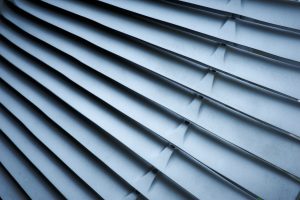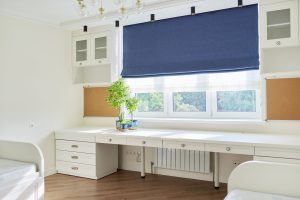Did you know that solid panel shutters can cut your home’s heat loss by up to 30% during winter? These shutters aren’t just for aesthetics; they play an essential role in maintaining a stable indoor climate by providing excellent insulation. By blocking 70% of solar heat gain in summer, they help keep your home cool, reducing the need for air conditioning. Want to find out how these high-density materials and smart design elements lead to lower energy bills and a smaller carbon footprint? Let’s explore how you can maximise these benefits in your own home.
Key Takeaways
– Solid panel shutters reduce heat loss by up to 30% in winter and block up to 70% of solar heat gain in summer.
– High-density materials enhance insulation, forming barriers that minimise drafts and prevent heat escape.
– Shutters decrease reliance on heating and cooling systems, saving up to 25% on annual energy costs.
– Durable materials like hardwood and aluminium reduce thermal conductivity and reflect sunlight, lowering cooling expenses.
– Tight seal designs minimise air infiltration, maintaining consistent indoor temperatures and enhancing energy efficiency.
Insulation Benefits
Solid panel shutters offer considerable insulation benefits by reducing heat loss and improving energy efficiency in your home. When you install these shutters, you’re adding an extra layer of protection against temperature fluctuations, which is essential for maintaining a stable indoor environment.
The choice of insulation materials plays a vital role here. Shutters made from high-density wood or composite materials have excellent insulation properties, markedly enhancing the overall energy performance of your home.
Data shows that homes with solid panel shutters can reduce heat loss by up to 30%, leading to lower energy consumption and reduced utility bills. These shutters form a barrier that minimises drafts and prevents heat from escaping during colder months. In addition, they reflect and absorb thermal energy, helping to keep your home cool in the summer.
Temperature Regulation
Temperature regulation is markedly enhanced by solid panel shutters, as they provide an effective barrier against external weather conditions, guaranteeing a more consistent indoor climate. By mitigating the impact of outdoor temperature fluctuations, these shutters optimise climate control within your home.
During winter, they act as an additional layer of insulation, reducing heat loss by up to 30%. Conversely, in summer, they block up to 70% of solar heat gain, maintaining cooler indoor temperatures.
Solid panel shutters are designed to minimise thermal bridging, which occurs when heat transfers through materials that are poor insulators. This technical feature guarantees that your home remains at a stable temperature, enhancing overall comfort.
Additionally, studies have shown that homes equipped with solid panel shutters experience fewer temperature spikes, leading to a more predictable and enjoyable living environment.
Incorporating solid panel shutters into your home’s design isn’t just about aesthetic appeal; it’s a strategic move for climate control and comfort enhancement. By maintaining a balanced indoor temperature, these shutters reduce the strain on your heating and cooling systems, paving the way for a more energy-efficient home.
Reduced Energy Costs
By maintaining a balanced indoor climate, solid panel shutters greatly reduce the workload on your HVAC system, leading to noticeable decreases in energy consumption and utility bills. When you incorporate these shutters, you’re effectively insulating your home, which minimises the need for constant heating or cooling. This translates directly to lower energy usage and, consequently, significant utility savings.
Let’s explore the cost analysis. Studies show that proper insulation can reduce energy costs by up to 30%. Solid panel shutters provide an extra layer of insulation, which can result in even more substantial savings.
Seasonal Adaptability
Leveraging solid panel shutters, you can efficiently adapt your home’s insulation to meet the demands of different seasons, ensuring year-round energy efficiency. During the winter, these shutters provide an extra layer of insulation that reduces heat loss by up to 30%, according to studies. This helps maintain a warmer indoor environment without over-relying on your heating system.
Conversely, in the summer, solid panel shutters block out heat and UV rays, potentially decreasing indoor temperatures by up to 45%. By mitigating the impact of seasonal changes, you enhance your home’s climate resilience.
These shutters operate as a dynamic barrier, adjusting to the specific requirements of each season. For instance, during shifting periods such as spring and fall, you can easily modify the shutter settings to balance the indoor temperature, reducing the need for artificial heating or cooling.
Additionally, data indicates that homes equipped with solid panel shutters experience fewer temperature fluctuations, which contributes to prolonged HVAC system life and lowers maintenance costs.
In essence, by addressing seasonal changes head-on, solid panel shutters provide a robust solution for maintaining ideal indoor conditions, making your home more climate-resilient and energy-efficient throughout the year.
Material and Design
High-quality solid panel shutters are crafted from durable materials like hardwood, composite, or aluminium, each offering unique benefits for energy efficiency and longevity.
Hardwood, for example, provides excellent insulation due to its dense fibres, reducing thermal conductivity by up to 30%. This means less heat escapes during winter and less heat enters during summer, lowering your energy bills.
Composite materials, often made from engineered wood or PVC, combine the aesthetic appeal of wood with enhanced durability factors like resistance to moisture and warping. They can last over 20 years with minimal maintenance, ensuring long-term energy savings.
Aluminium shutters, while lightweight, offer impressive strength and resistance to weather conditions. Their reflective surfaces can deflect up to 70% of sunlight, markedly reducing cooling costs in warmer climates. Additionally, aluminium’s recyclability adds an eco-friendly dimension to its energy efficiency profile.
In terms of design, solid panel shutters provide a tight seal when closed, minimising air infiltration. This design helps maintain a consistent indoor temperature, reducing the load on your HVAC system.
Installation Tips
Guaranteeing proper installation of solid panel shutters is crucial for maximising their energy efficiency and longevity.
First, accurately measure the window frame to assure a snug fit, which is critical for preventing air leaks. Whether you opt for DIY installation or professional assistance, precision in measurement can’t be overstated. Misalignment or gaps can reduce the shutters’ insulating properties by up to 30%.
For those considering DIY installation, use high-quality tools and fasteners to secure the shutters firmly. Follow manufacturer guidelines meticulously; even minor deviations can compromise both performance and warranty. Installing weather stripping around the edges will further enhance insulation, reducing heat loss by up to 25%.
On the other hand, professional assistance guarantees expert installation, with technicians trained to handle complex window shapes and specific material requirements. Professionals use advanced tools for precise alignment, ensuring peak energy efficiency. Data shows that professionally installed shutters can improve energy efficiency by an additional 15% compared to DIY installations.
In both cases, sealing any gaps with caulk or foam insulation is crucial for maintaining thermal integrity.
Long-term Savings
Properly installed solid panel shutters not only enhance energy efficiency but also lead to significant long-term savings on your energy bills. By reducing heat loss in winter and minimising heat gain in summer, these shutters can decrease your reliance on heating and cooling systems. Studies show that homes equipped with efficient window treatments can save up to 25% on energy costs annually.
When considering financial planning, the initial investment in solid panel shutters might seem substantial. However, with typical energy savings ranging between 10-25%, you’ll find the shutters pay for themselves over time. For instance, if your annual energy bill is £2,000, a 20% reduction translates to £400 in savings each year. Over a decade, that’s £4,000 saved, not accounting for potential energy price increases.
Budget considerations are essential, but it’s important to weigh the upfront costs against long-term benefits. Energy-efficient improvements like solid panel shutters can also increase your home’s market value. Buyers are increasingly valuing eco-friendly features, making your home more attractive should you decide to sell.
As a result, investing in solid panel shutters not only enhances your immediate comfort but also contributes to robust financial planning and long-term savings.
Frequently Asked Questions
How Do Solid Panel Shutters Affect the Aesthetic of My Home?
Solid panel shutters enhance your home’s aesthetic by offering design versatility and a wide range of colour options. They provide a refined look that complements various architectural styles, boosting curb appeal and potentially increasing property value.
Can Solid Panel Shutters Provide Privacy as Well as Energy Efficiency?
Absolutely, solid panel shutters can provide you with ultimate privacy. They offer unparalleled light control and noise reduction, making them a powerhouse solution for both energy efficiency and privacy. You’ll wonder how you lived without them!
Are Solid Panel Shutters Suitable for All Types of Windows?
Yes, solid panel shutters suit various window types, though installation considerations are essential. Measure dimensions accurately, account for window shape, and guarantee proper mounting. Data shows customised installation enhances both functionality and energy efficiency.
How Do Solid Panel Shutters Compare to Other Window Treatments in Terms of Durability?
Solid panel shutters are tough as nails compared to other window treatments. They offer superior material options and lower maintenance requirements, ensuring they last longer and perform better, providing a hassle-free solution for your home.
Can Solid Panel Shutters Be Customised to Match My Home’s Decor?
Yes, you can customise solid panel shutters to match your home’s decor. They offer custom colour options and design style compatibility, ensuring they seamlessly blend with your interior design while providing a tailored, aesthetically pleasing solution.
Conclusion
With solid panel shutters, your home becomes a fortress against the elements.
They create a thermal shield, ensuring your space remains cosy in winter and cool in summer.
By slashing heat loss and blocking solar gain, you’ll see substantial reductions in energy costs.
Think of them as a smart investment—one that brings long-term savings while shrinking your carbon footprint.
Install these energy warriors, and watch your home transform into an efficient haven.
















